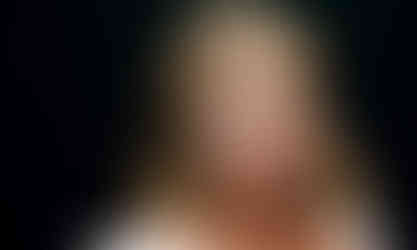Photo Weaving Emotions...
- amiedodgsonart
- Nov 13, 2019
- 3 min read
After taking inspiration from David Samuel Stern for my Gender project I decided to use his weaving technique in 3D this time, not just in 2D using photoshop. Instead of using images from a magazine or photoshop, I took some portraits of my own in the studio with a simple High key lighting, printed them off in A3 and weaved them together.
This artist relates to my theme because while each single print by itself depicts a subject at rest, when woven together, the final result appears to be a human figure in motion. I felt this would work in relation to my theme of looking at emotions and mental health. After doing my primary research of interviewing people around their mental health difficulties, I found that many people wear a mask of some sort. The 'I'm ok' mask, when really, they're suffering inside. The idea of what people wear on the inside, isn't whats portrayed on the outside.
In Stern’s own words, these images “are an attempt to bridge dignified, direct portraits with a sort of abstraction that allows their subjects to hide within themselves, and the photographs to be distinctly physical objects. In hiding some things, we reveal others.” This is plain to see in my images of Fahad. I directed Fahad to speak about different subjects that I knew would stir up an emotion in him. I asked him to think of a time he was most happy, he said when his son was born, I took my chance and photographed his expression. I also asked him to think of a time when he felt the most sad, and he said when he lost his friend in a car accident. Having this raw emotion really added to the mood and message behind the outcome. Putting the images straight into photoshop with no post production work kept it simple and raw, in keeping with my project of raw emotions within mental health. After sending them straight to print, I then began the process of weaving them physically.

Stern's work is ghostly, intriguing and almost life like, this is due to the effect that the weaving has created. He demonstrates that weaving can encompass more than the interlacing of simple threads and tactile fabrics. This ancient craft can also be used to design dynamic and thought-provoking images. I love the textures that come from the weave which Stern describes as being rhythmic, what a great description for an image.
The process of weaving was long!
I began by measuring 1cm lines so I could slice, using a knife, cutting board and ruler from border to border horizontally on one, and then vertically on the other. Attaching the bottom image of Fahad, his sad face, to a piece of grey board I began slicing the other image, his happy face, piece by piece and weaving it in and out of the other.
This was the finished result.

A problem I encountered whilst doing this was that It would have been easier to cut right to the end on the bottom image so it was easier to weave. This is something to remember if I do this again.
What worked well was the expressions from Fahad, I seemed to catch real emotion which was great. We did have a discussion earlier on in the session about whether or not you can catch a person's true identity when photographing them. After doing this shoot, I feel that you can, if you are able to talk with your subject on a level, without just forcing them to do different poses. I prefer candid shots and I felt this worked really well for this mini project.
It would be even better next time, If I did some post production work on the image and had more time to do so. Alongside this, when measuring out the lines for the slices, If I was to plan more accurately for around the eye area as I felt that I could have showed more of the expression.
It would be great to do a series of images of different people, capturing different emotions. This is something that I would like to explore further as people fascinate me, and I really enjoy photographing the intricacies of human behaviour. Exploring this within Fine Art photography is what excites me most as I am able to push my boundaries and explore in depth.
















Comments